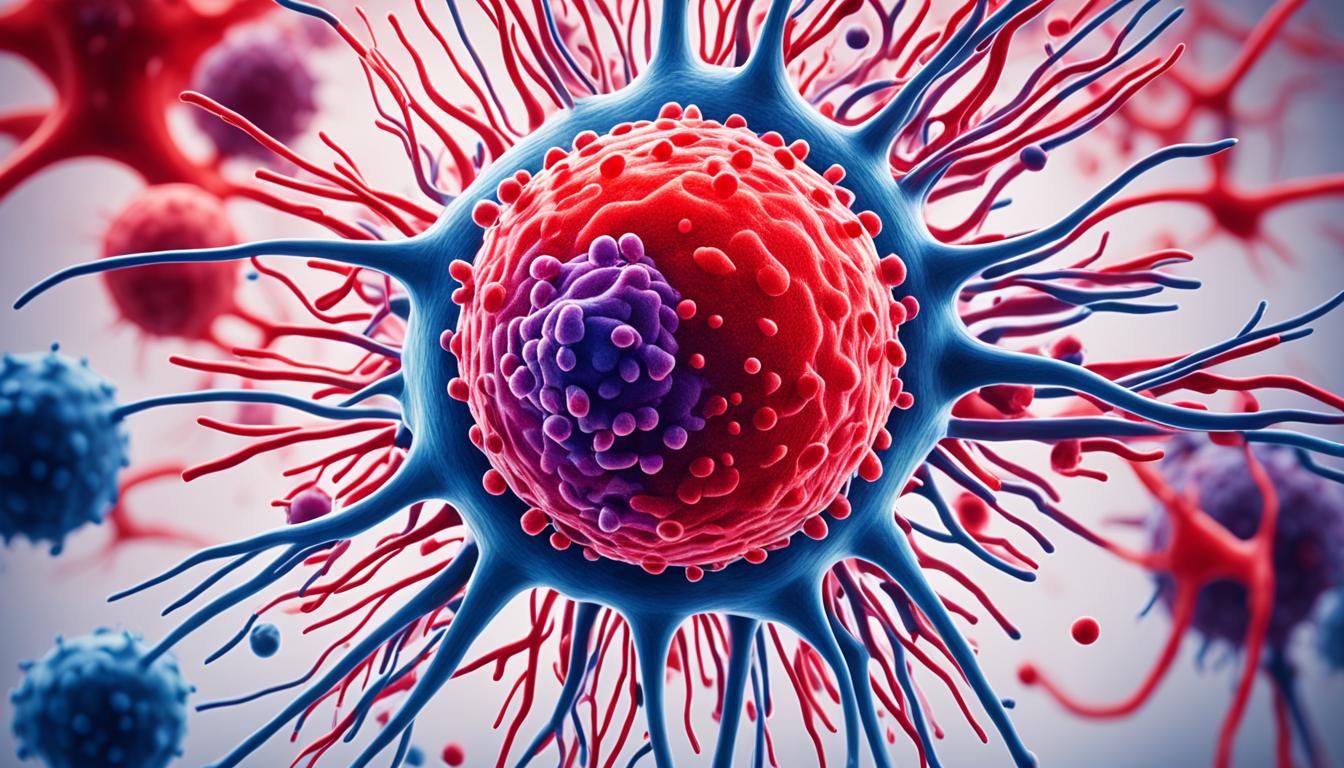Granulomatosis with polyangiitis (GPA) is a rare autoimmune condition. It affects small- and medium-sized blood vessels. The disorder mainly harms the respiratory tract and kidneys but can also damage other organs. People often call it Wegener’s granulomatosis. This disease is known for causing granulomatous inflammation, leading to various symptoms.
The symptoms of GPA depend on which organs are affected. They can include nose ulcers, sinus pain, and chronic ear infections. People may also cough up blood, have lung or kidney issues, and experience joint pain. Skin lesions, eye problems, and neurological symptoms are possible too. These symptoms can greatly affect a person’s day-to-day life and should lead to seeking medical help quickly.
The exact cause of GPA is still not completely understood. It seems to come from a mix of genes, the environment, and perhaps infections. Scientists are studying more to find out exactly how these factors interact and lead to the disease.
Diagnosing GPA is not always straightforward. It requires a detailed look at the patient’s symptoms and health history. Doctors also do tests to check for certain antibodies and may take samples from affected organs for further examination.
Treating GPA focuses on reducing inflammation and calming the immune system. Doctors often use drugs that lower the immune system’s activity, like methotrexate and cyclophosphamide, along with steroids to help bring the disease under control. Sometimes, when these methods don’t work well, stem cell therapy could be considered. This therapy aims to replace the faulty immune system with a new one, which might offer a chance for better health.
Key Takeaways:
- Granulomatosis with polyangiitis (GPA) is a rare autoimmune disorder that affects the respiratory tract, kidneys, and other organ systems.
- Symptoms of GPA can include nasal ulcerations, sinus pain, chronic middle ear infection, coughing up blood, lung inflammation, kidney abnormalities, joint pain, skin lesions, eye abnormalities, and neurological symptoms.
- GPA’s exact cause is unknown but is thought to be a combination of genetic, environmental, and infectious factors.
- Diagnosis involves clinical evaluation, ANCA testing, and biopsy of affected organs.
- Treatment options include immunosuppressants, corticosteroids, and stem cell therapy for refractory cases.
Symptoms and Complications of Granulomatosis with Polyangiitis
Granulomatosis with polyangiitis (GPA) is a type of autoimmune disease. It affects different body parts, leading to various symptoms. Often, it first shows in the respiratory system with a runny nose, nasal crusts, sinus pain, and ear infections.
Lung issues are common, too. They might cause a cough, blood in the cough, trouble breathing, and chest pains.
The disease also impacts the kidneys. It can cause high blood pressure, swelling, and even kidney failure if not treated early. Joint pain is another occurrence, making daily life harder.
Patients may also face eye problems, like redness and blurred vision. Skin issues can happen, appearing as sore nodules or ulcers. Some experience numbness, weakness, and even seizures.
Complications
Without treatment, GPA can lead to severe issues. Kidney failure and lung bleeding are among the most serious. They can cause major health problems.
Aside from the lungs and kidneys, GPA can affect various other organs. Eyesight may deteriorate, or the person might go blind. It also has effects on the nervous system, possibly causing lasting problems.
Early diagnosis and treatment are key. With regular check-ups, drug use, and changes in lifestyle, quality of life can improve. This condition can be challenging but manageable with proper care.
Common Symptoms of Granulomatosis with Polyangiitis
| Organ System | Common Symptoms |
|---|---|
| Respiratory Tract | Persistent runny nose, nasal crusting, sinus pain, chronic middle ear infection |
| Lungs | Cough, coughing up blood, difficulty breathing, chest pain |
| Kidneys | High blood pressure, fluid retention, kidney abnormalities, kidney failure |
| Joints | Joint pain, limited mobility |
| Eyes | Redness, pain, blurry vision |
| Skin | Nodules, ulcers, skin lesions |
| Nervous System | Numbness, tingling, weakness, seizures |
Diagnosis and Treatment of Granulomatosis with Polyangiitis
Diagnosing GPA requires a detailed look at a person. This includes exams, tests, and possibly a biopsy. Blood tests, especially for ANCA, are key in figuring out if someone has GPA. High ANCA levels in the blood can point to this disease.
A biopsy might also be done. This is when a small piece of tissue is taken from an affected organ. It helps doctors see if there’s granulomatous inflammation, which is a sign of GPA.
The goal of treating GPA is to quiet down the immune system. This can reduce inflammation and save the blood vessels from further harm. Drugs like methotrexate, cyclophosphamide, and corticosteroids are often used. They help achieve remission and provide quick symptom relief.
Recently, stem cell therapy has shown promise for hard-to-treat cases of GPA. This therapy aims to fix the immune system with new stem cells. It might prevent more damage to the blood vessels. Stem cell therapy is still in the research phase but could be a beneficial treatment.
After treatment, it’s important to keep a close eye on the disease. Monitoring your health regularly with blood tests and imaging is essential. Doctors may need to change your treatment plan over time. Sticking to your medication and making healthy lifestyle choices helps keep GPA under control.

